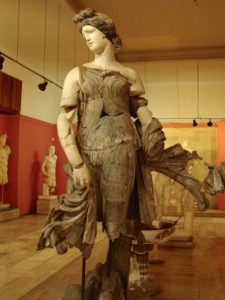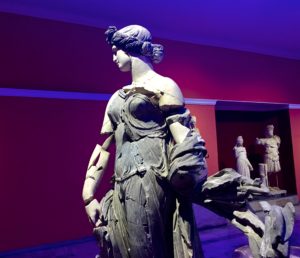STATUE OF DANCER / ANTALYA MUSEUM
The statue of a dancer was discovered in 1981 during the excavation of the South Bath of Perge.
(In the gallery of Claudius Peison)
It’s one of the most significant discoveries among all the statues in Antalya Museum.
An amazing technique uses two colors of marble. Black marble used for the hair and clothes.
White used for body parts as face, neck and arms. It was accomplished by using large and small pieces from different blocks of marble. 103 pieces were placed together for the restoration.
The figure in the statue wears a long, thin and armless chiton tied at the tip. The folds of clothing emphasize the vigorous motions of figure and thesoft outline of her shapely body. The sweeping ends of the himation, which also serve as a belt, emphasize the twisting motion of the figure. Because of this motion the figure named “Dancer”.
According the archaeologists this is a 2nd century copy of an original from Hellenistic period.




